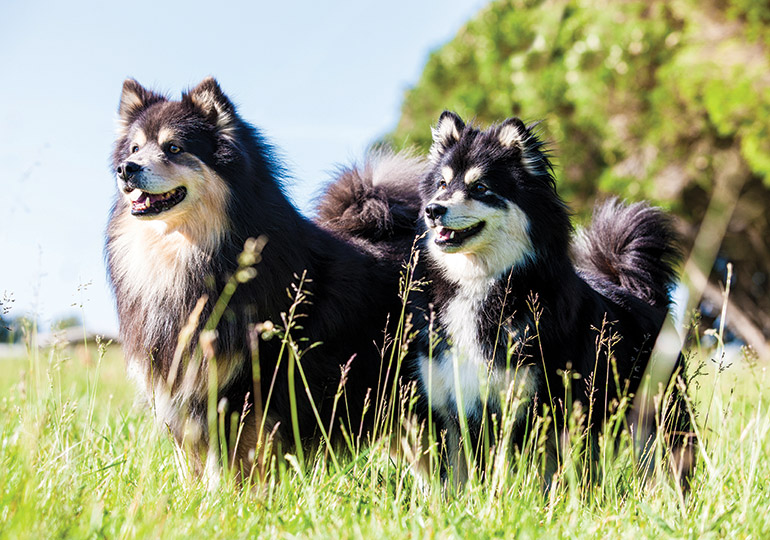
GROUP 5 - WORKING DOGS
The Finnish Lapphund is a Spitz breed, from the Lapland region of Scandinavian Finland. The breed almost approached extinction as a consequence of World War II. Following the war, an outbreak of Parvovirus further contributed to the decline in numbers.
After the amalgamation of various kennel clubs into the Finnish Kennel Association during the 1950s, a plan was initiated for the development of a Lapponian herding breed. Over time, two distinct types of dog emerged: a short coated breed, the Lapponian Herder (Lapinporokoira); and one with a fuller coat, the Lapphund (Lapinkoira).
The differences between the two breeds were determined following revisions to the standards in 1975. Furthermore, in 1993 the official name was changed to Suomenlapinkoira (Finnish Lapphund).
The breed was originally used for hunting, then for working reindeer herds by the nomadic Sami people. As the Sami culture progressed from the role of hunter/gatherer to farmer, so did the role of the dogs. The herding instinct of the breed is still inherent today. The Finnish Lapphund performs differently to other sheep dogs and ‘the Lappie bark’ is a predominant feature of how the breed tends livestock.
While this is a Spitz breed, which may support an independent attitude, the breed is typically very friendly and submissive with people. It is a sociable breed; the ‘Lappie play bow’ being one of its endearing actions.
The Finnish Lapphund is a versatile breed. It is gentle with small children but is also an active breed, which can suit various family lifestyles.
The breed is medium sized, slightly longer than the height at the withers – males 49cm; females 44cm, plus or minus 3cm. The coat is profuse; the males especially exhibit an abundant mane. The guard coat is long, straight and harsh; the undercoat soft and dense. Any colour coat is permissible but the basic colour must be dominant.
A weekly brush is usually adequate to maintain the double coat and prevent knots. As the coat is relatively odour free, bathing is not required frequently. Any dirt collected on the coat tends to fall out as the coat dries. The breed tends to shed its soft undercoat twice yearly. This is easily removed with brushing.
Hip Dysplasia can be an issue, as in most breeds. Prcd-PRA had been a problem within the breed until the advent of recent DNA testing capabilities. HC (Hereditary Cataract), MRD (Multifocal Retinal Dysplasia) and PHPTVL (Persistent Hyperplastic Tunica Vasculosa Lentis) and PHPV (Persistent Hyperplastic Primary Vitreous) have also been noted in the breed. These conditions are easily diagnosed by direct/indirect ophthalmoscopy. Finnish Lapphunds typically live between 12 and 15 years.
Finnish Lapphunds are an adaptable breed. They enjoy outings and being part of the family. Finnish Lapphunds are also extremely agile and have been successfully trained for the show ring, as well as various dog sports.
Words: Melissa Waters
Now you know a little about the Finnish Lapphund you may have think that this is the dog for you. Before you make a decision, please make contact with the breed club or your State controlling body for purebred dogs. They will be able to give you information about available puppies and also suggest dog shows where you can see the breed and speak to breeders. In this way you will gain a better perspective of the Finnish Lapphund and its needs and whether this breed would suit your lifestyle.